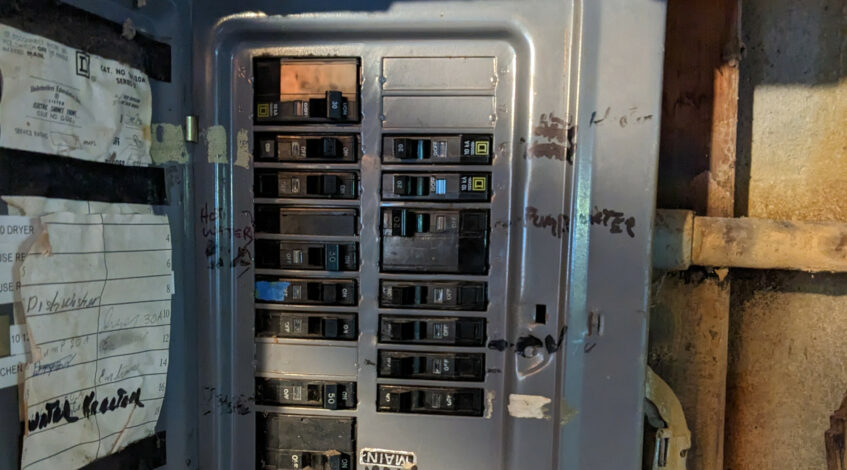Purchasing an older home has a certain charm that many homeowners find appealing. The rich history, unique architecture, and established neighborhoods can make these properties highly desirable. However, along with the character and beauty of older homes often come a few challenges, particularly when it comes to electrical systems. In this blog post, we will explore some of the common electrical issues found in older homes, and what you should know as a homeowner.
Outdated Wiring
One of the most prevalent electrical issues in older homes is outdated wiring. Many older homes were constructed with electrical systems that are inadequate for today’s power demands. The use of knob-and-tube wiring, aluminum wiring, or outdated fuse boxes can pose significant safety hazards.
Knob-and-tube wiring, common in houses built before the 1950s, consists of individual wires supported by porcelain knobs and tubes. This type of wiring lacks grounding, which can increase the risk of electrical shock and fire hazards. Similarly, aluminum wiring, used in homes during the 1960s and 1970s, is prone to oxidation and can overheat, causing fire risks.
Overloaded Circuits
Another common issue in older homes is the presence of overloaded circuits. Older electrical systems were not designed to handle the number of electronic devices and appliances we use today. As a result, homeowners may experience frequent tripping of circuit breakers or blown fuses, which can be frustrating and inconvenient.
To mitigate this issue, it is essential to distribute the load evenly across circuits and avoid using multiple high-wattage appliances simultaneously. Consider consulting with a licensed electrician to assess your home’s electrical capacity and determine if any upgrades or additions are necessary.
Lack of Ground Fault Circuit Interrupters (GFCIs)
Ground Fault Circuit Interrupters (GFCIs) are electrical safety devices designed to protect against electric shock. They detect imbalances in electrical currents and shut off power to the circuit, preventing potential injuries. However, older homes often lack GFCIs, especially in areas prone to moisture, such as kitchens, bathrooms, and outdoor outlets.
Installing GFCIs in these areas is crucial to ensure the safety of your household. These devices should be installed by a professional electrician who can assess your home’s wiring and make the necessary modifications to comply with current electrical codes.
Insufficient Outlets
Older homes often have a limited number of electrical outlets, which can be a major inconvenience in our modern, technology-driven lifestyles. Homeowners often rely on extension cords and power strips to accommodate their growing number of electronic devices. However, this can lead to overloaded circuits and increased fire risks.
Consider hiring an electrician to install additional outlets throughout your home. This will not only enhance convenience but also reduce the reliance on extension cords, improving safety and reducing the risk of electrical hazards.
Owning an older home can be a rewarding experience, but it is important to be aware of the common electrical issues that may arise. By addressing these issues promptly, you can prevent potential hazards and ensure the proper functioning of your home’s electrical system. At KD Electric, we have the expertise to handle these issues and provide professional electrical services tailored to your home’s needs. Contact us today to schedule an inspection and ensure the safety of your older home.

